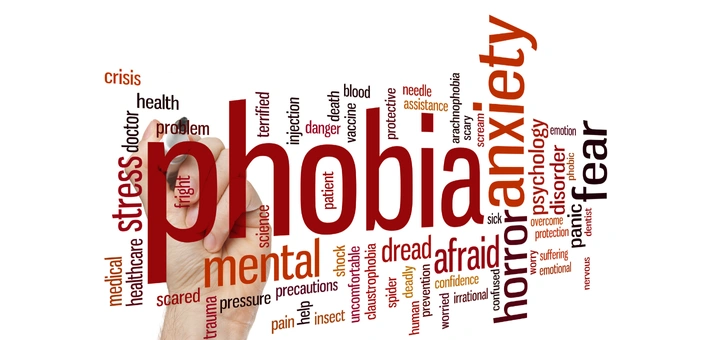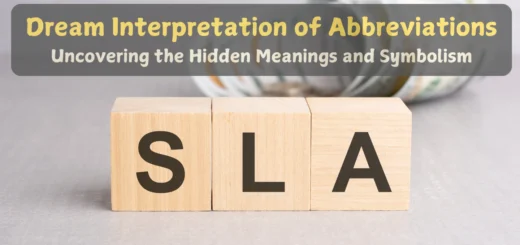Fear can be a powerful force—one that dictates the way we move, speak, and even think. Sometimes, these anxieties take the shape of phobias, intensely irrational fears that go far beyond a moment of nervousness. Whether it’s the fear of everyday encounters like spiders and heights, or more obscure triggers that lurk just beneath our awareness, phobias can quietly influence our decisions, hold us back from opportunities, and impact our quality of life.

In this guide, we’ll explore the wide spectrum of phobias, arranged from A to Z, uncovering their hidden roots and understanding why these fears persist. More importantly, we’ll delve into the psychological underpinnings, common symptoms, and practical strategies for managing and overcoming them. By the end, you’ll not only recognize the fear factors that shape your life but also gain the knowledge and tools needed to reclaim control of your mind, choices, and future.
Understanding Phobias: A Brief Overview
Phobias are more than just momentary feelings of unease; they are persistent and often debilitating fears that can significantly impact an individual’s daily life. From the sudden rush of panic to the overwhelming urge to avoid certain objects or situations, phobias are rooted in both psychological and physiological responses. They can emerge from personal experiences, cultural influences, or even learned behaviors passed down through generations, making them more common and complex than many realize.
What Are Phobias?
Phobias are categorized as anxiety disorders, defined by an intense and irrational fear of a specific object, activity, or situation. Unlike everyday nervousness, these fears are enduring and disproportionate to any real threat. Individuals may experience physical symptoms—such as sweating, trembling, or a racing heart—alongside profound emotional distress. This response often leads to avoidance behaviors, as people take great measures to prevent encountering their feared trigger.
Why Understanding Phobias Matters
Recognizing and understanding phobias is a critical step toward emotional well-being and personal growth. By identifying the underlying causes and acknowledging the impact these fears have, individuals can pursue effective coping strategies and treatments. Whether it’s through professional therapy, self-help techniques, or supportive communities, shining a light on phobias empowers those affected to regain control of their lives, reduce anxiety, and foster a healthier outlook on the world around them.
Types of Phobias
Not all phobias fit neatly into a single category; they can vary in scope, intensity, and underlying causes. Generally, mental health professionals classify phobias into three main categories. Understanding these broad groups helps lay the groundwork for recognizing specific phobias and informs more targeted strategies for coping and treatment.
Specific Phobias
Specific phobias revolve around distinct objects, animals, or situations. These might include fear of spiders (arachnophobia), heights (acrophobia), or even commonplace scenarios like riding an elevator. Individuals experiencing these fears often acknowledge that their responses are disproportionate, yet they struggle to control the intense anxiety that surfaces upon encountering the trigger.
Social Phobias (Social Anxiety Disorder)
Social phobias, often referred to as social anxiety disorder, center on a fear of judgment, embarrassment, or humiliation in social settings. Whether it’s speaking before a crowd, meeting new people, or even engaging in casual conversation, those affected may feel self-conscious and anxious. This fear can discourage individuals from pursuing opportunities at work, school, or in personal relationships.
Agoraphobia
Agoraphobia involves a pronounced fear of places or situations where escape might be difficult or help may not be readily available if panic sets in. Commonly, this fear manifests in open spaces, crowded venues, or scenarios that seem inescapable, such as being on a bus or train. Left unaddressed, agoraphobia can lead some individuals to confine themselves to familiar surroundings, limiting their freedom and daily activities.
List of Phobias: Common Phobias From A to Z
A-F: From Arachnophobia to Francophobia
The world of phobias is incredibly diverse, reflecting not only our common fears but also the unique anxieties that shape individual experiences. From the well-known fear of spiders lurking in dark corners to more obscure aversions rooted in cultural, environmental, or psychological factors, exploring these phobias offers valuable insights into how our minds work. By taking an alphabetical approach and focusing on phobias that start with letters A through F, we can begin to appreciate the sheer breadth of human apprehension. This expansive list will delve into some of the most frequently encountered fears as well as those that are less commonly discussed, providing definitions, possible causes, and considerations for coping. While phobias vary greatly in severity and impact, understanding their nature often serves as the first step toward managing them—whether through professional therapy, gradual exposure techniques, or personal strategies that rebuild a sense of safety and confidence.
Arachnophobia (Fear of Spiders):Perhaps one of the most recognizable and frequently referenced phobias, arachnophobia involves an intense fear of spiders and other arachnids. Individuals with arachnophobia may react strongly, sometimes even panicking at the mere sight of a spider or its web. This fear can stem from evolutionary factors—spiders have been historically associated with venomous bites—or from cultural influences and personal experiences. Overcoming arachnophobia often involves gradual exposure therapy, where a person learns to tolerate images of spiders, then videos, and eventually real-life encounters under controlled, supportive conditions.
Acrophobia (Fear of Heights):Acrophobia is the overwhelming dread of being up high. Standing on a ladder, looking down from a tall building, or even imagining a high vantage point can provoke dizziness, nausea, sweating, or shaking. Often, this fear develops from a negative experience such as a fall, or it may be tied to our natural instinct to avoid dangers associated with great heights. Cognitive-behavioral therapy (CBT) and virtual reality exposure are common strategies to help individuals learn to manage their reactions and gradually trust their footing in elevated places.
Aerophobia (Fear of Flying):Aerophobia involves anxiety about boarding an airplane and traveling through the skies. Turbulence, unfamiliar noises, or lack of control can intensify the sense of peril. Many who experience this phobia worry about mechanical failures, terrorist attacks, or simply the sensation of being trapped in a metal tube high above the ground. Treatments often include education about aviation safety, relaxation techniques, in-flight coping strategies, and sometimes controlled simulations or short practice flights to build confidence.
Aichmophobia (Fear of Sharp Objects):Aichmophobia encompasses an aversion to needles, knives, scissors, and any pointed object. This fear can complicate everyday tasks, from cooking to receiving necessary medical care. Root causes may include childhood trauma, cultural narratives about pain, or an inherited anxiety pattern. Desensitization therapy—where the individual is slowly introduced to images, then safe interactions with harmless sharp objects—can alleviate extreme distress. Finding a supportive healthcare professional who understands this phobia can also encourage a more comfortable environment for medical procedures.
Agliophobia (Fear of Pain):The fear of experiencing pain, known as agliophobia, can be paralyzing and may lead people to avoid essential medical treatments, exercise, or activities that have any perceived risk of discomfort. This fear often stems from previous painful episodes or a heightened sensitivity to physical sensations. Addressing agliophobia might involve cognitive reframing to understand that pain, while unpleasant, can be managed and treated. Techniques like mindfulness, relaxation exercises, and education about pain management methods can help reduce anxiety related to bodily discomfort.
Agoraphobia (Fear of Open or Inescapable Spaces):Although previously discussed, agoraphobia warrants repeating due to its complexity. Individuals with agoraphobia fear places or situations that may be hard to escape from or where help is not readily available if anxiety intensifies—often crowded malls, public transportation, or wide-open fields. This phobia can confine a person to their home, severely limiting their social life and independence. Therapy may involve gradual exposure to feared environments, combined with techniques that challenge catastrophic thoughts and encourage self-reliance.
Amaxophobia (Fear of Driving):Driving anxiety can manifest as amaxophobia, a fear of operating a vehicle or riding as a passenger. Memories of accidents, a lack of confidence behind the wheel, or overwhelming traffic conditions might trigger this phobia. In some cases, panic attacks can occur even at the thought of driving. Overcoming amaxophobia commonly involves safe driving courses, starting with short, low-traffic routes and slowly building up to more complex scenarios. Professional support from therapists or specialized instructors can reassure individuals that they can control their vehicle and their emotional responses.
Androphobia (Fear of Men):Androphobia is a less commonly discussed phobia but can have a profound impact on an individual’s social and personal life. This fear involves distrust, discomfort, or panic in the presence of men. Rooted in past trauma, negative cultural messages, or personal experiences, androphobia can complicate daily interactions. Therapy often includes exploring the underlying causes and gradually engaging in positive, controlled social experiences with men to help the individual distinguish between real threats and safe, respectful encounters.
Anthophobia (Fear of Flowers):It may seem surprising, but some people experience anthophobia, an intense aversion to flowers. The soft petals and delicate fragrance that many find delightful can provoke anxiety, likely due to associations with insects, pollen, or specific traumatic events. Sometimes, cultural beliefs, myths, or negative childhood memories linked to certain plants can influence this fear. Gentle exposure, sensory desensitization—like examining photographs or artificial flowers first—and learning about flowers’ harmless nature can help ease the anxiety.
Astraphobia (Fear of Thunder and Lightning):Stormy weather can be unsettling, but for those with astraphobia, thunder and lightning produce intense panic. The unpredictability of thunderclaps or sudden lightning strikes may trigger rapid heartbeats and a desire to hide. This phobia can begin in childhood and persist into adulthood. Treatment might include sound recordings of storms at a manageable volume, relaxing breathing exercises, and learning factual information about the rarity of lightning strikes. Reducing uncertainty and building a toolkit of coping techniques can empower those affected.
Autophobia (Fear of Being Alone):Autophobia centers on the anxiety of solitude, often arising from feelings of vulnerability, abandonment, or lack of control. Individuals might dread being left without company, struggling to enjoy quiet moments or personal reflection. Working through autophobia might involve recognizing its root causes—such as attachment issues or past emotional neglect—and developing self-soothing strategies, hobbies that foster independence, and gradual exposure to short periods alone until comfort replaces anxiety.
Bacteriophobia (Fear of Bacteria):With widespread awareness about germs and infections, it’s no surprise that bacteriophobia can manifest in severe ways. People may become obsessively clean, avoid certain foods or surfaces, or continuously worry about illness. Understanding that not all bacteria are harmful and that the human body coexists with beneficial microbes can help. Therapeutic techniques often focus on challenging catastrophic thoughts, using trusted scientific information, and slowly reducing avoidance behaviors around everyday surfaces or food items.
Barophobia (Fear of Gravity):Barophobia is a rare but intriguing phobia characterized by the fear that gravity may suddenly cease to function, or that its force could harm the individual by increasing unexpectedly. This irrational fear can stem from a misunderstanding of physical laws or a traumatic event involving falling. Therapists may use education about physics, gentle exposure to activities involving slight changes in elevation (like using an elevator), and relaxation techniques to help the individual feel grounded—both literally and figuratively.
Batrachophobia (Fear of Amphibians, Especially Frogs):Frogs, toads, and salamanders may appear harmless or even fascinating to many, but to those with batrachophobia, these creatures can induce significant distress. Slimy skin, sudden movements, and cultural stories linking frogs to unpleasant outcomes might contribute. Gradual exposure—starting with images, then visiting a zoo or nature center—combined with learning about amphibians’ ecological roles, can reshape perceptions and reduce fear.
Bibliophobia (Fear of Books):While reading is often considered a source of knowledge and pleasure, bibliophobia involves anxiety triggered by books themselves or the act of reading. This may arise from negative educational experiences, fear of certain topics, or difficulty processing written information. Overcoming bibliophobia might involve starting with short, visually engaging materials, using audiobooks to reduce pressure, or working with a tutor or therapist to alleviate the fear associated with textual content. In time, building positive reading experiences can restore comfort and curiosity.
Claustrophobia (Fear of Enclosed Spaces):Claustrophobia is one of the most widely recognized phobias. Elevators, crowded rooms, or MRI machines can provoke panic by creating a sensation of being trapped. Many people develop this phobia after a traumatic event involving confinement, while others may have a more general sensitivity to feeling restrained. Treatment strategies often include gradual exposure, such as spending increasing amounts of time in slightly cramped conditions, breathing exercises to maintain calm, and cognitive techniques to challenge thoughts about danger or inability to escape.
Coulrophobia (Fear of Clowns):Popular culture and horror films have heavily influenced coulrophobia. The distorted makeup, exaggerated facial expressions, and unpredictable behavior of clowns can unsettle individuals—especially children. Negative media portrayals or a personal scare at a circus could trigger this fear. Overcoming coulrophobia often involves carefully controlled exposure, starting with cartoon images or friendly clown characters, understanding the human face behind the makeup, and reframing clowns as performers rather than threats.
Cynophobia (Fear of Dogs):Despite dogs being beloved pets around the world, cynophobia is relatively common. It can stem from a traumatic encounter, persistent warnings during childhood about dangerous dogs, or observing someone else’s negative experience. Management includes exposure to calm, well-trained dogs under professional supervision, learning about canine body language to interpret a dog’s intentions accurately, and gradually building trust through positive, low-pressure interactions until the individual no longer perceives dogs as an immediate threat.
Dendrophobia (Fear of Trees):Trees, often seen as symbols of life and growth, can oddly become a source of anxiety for some. Their large size, dark silhouettes, or the unknown creatures that might live among their branches can feel intimidating. This fear might be linked to a frightening childhood memory involving a forest or simply a sense of vulnerability when surrounded by towering trunks. Addressing dendrophobia may start with gentle hikes, guided nature tours, or sitting near a single tree in a controlled setting, combined with learning about the ecological benefits and harmless nature of most trees.
Dentophobia (Fear of Dentists):Dental procedures can feel invasive and unpleasant, making dentophobia quite widespread. The sounds of drills, fear of pain, or a negative past experience at the dentist’s office can linger in the mind. Modern dentistry techniques, pain-management options, and the willingness of many dentists to discuss procedures openly can help ease this fear. Some people find relaxation exercises, sedation dentistry, or seeking a dentist who specializes in anxious patients instrumental in overcoming their dread of the dental chair.
Emetophobia (Fear of Vomiting):Emetophobia involves an intense fear of vomiting or seeing others vomit, sometimes leading to strict dietary rules or avoidance of social events where illness might occur. This fear can arise after a traumatic sickness episode or become linked to anxiety disorders. Recovery often involves gradual exposure, such as discussing the topic in a safe environment, watching fictional portrayals of illness, and ultimately learning that occasional nausea is a manageable bodily function rather than a life-shattering event.
Entomophobia (Fear of Insects):From ants and beetles to wasps and cockroaches, entomophobia covers a broad range of creepy-crawly triggers. Instinctive reactions to insects, which might carry disease or inflict painful bites, are not uncommon. Overcoming this fear might start with identifying harmless species and observing them in controlled environments (like behind glass at a natural history museum) to demystify their behavior. Gradually, entomophobics can learn to coexist peacefully with insects and distinguish between harmless bugs and those requiring caution.
Equinophobia (Fear of Horses):Horses are large, powerful animals that can be intimidating to those who fear losing control around them. A bad riding experience, a sudden kick or bite, or warnings about unpredictable behavior may cause equinophobia. Approaches to help ease this fear often include working with gentle, well-trained horses under the guidance of an experienced handler, learning about equine body language, and slowly building confidence through passive observation before any direct interaction.
Frigophobia (Fear of Cold):Frigophobia is an extreme sensitivity to low temperatures. People with this fear might worry about hypothermia, frostbite, or simply being uncomfortably chilled. They may avoid winter activities, dress excessively warmly, or decline travel to cooler climates. Addressing frigophobia can start with controlled exposure to mild cold and reassurance that the body can maintain warmth under moderate conditions. Learning about proper clothing, heating methods, and safe winter practices can help restore confidence.
Francophobia (Fear of French People or French Culture):Cultural phobias like francophobia may stem from stereotypes, negative media portrayals, or personal misunderstandings. Fear and distrust of another culture’s language, customs, or social norms can limit travel, international friendships, or personal enrichment. Overcoming cultural phobias often involves education, exposure to authentic cultural experiences, learning a bit of the language, or interacting with members of that community in positive, respectful settings. By doing so, individuals can replace fear-based misconceptions with appreciation, understanding, and curiosity.
G-M: From Glossophobia to Mysophobia
As we continue our alphabetical exploration of human fears, the sheer diversity of phobias becomes increasingly apparent. Within the letters G to M, we encounter anxieties that touch on everything from everyday experiences—like speaking in front of an audience—to deeply ingrained cultural and biological triggers. Some of these fears are relatively common and widely understood, while others remain obscure, surfacing only in particular social contexts or through unique personal histories. This section dives into an extensive range of phobias, offering definitions, insights into potential origins, and practical approaches to managing or overcoming these challenges. By examining these fears closely, readers can gain a more nuanced understanding of their own responses to the world and better empathize with others who might find certain aspects of life intimidating or overwhelming.
Glossophobia (Fear of Public Speaking):Glossophobia is among the most frequently encountered phobias, impacting individuals who face intense anxiety when delivering a presentation, leading a meeting, or simply voicing their thoughts in a group setting. The fear often stems from worries about judgment, ridicule, or making mistakes in front of others. Physical symptoms like trembling, sweating, and a pounding heart can arise just from anticipating the event. Overcoming glossophobia may involve joining public speaking clubs, practicing relaxation techniques, seeking guidance from speech coaches, or gradually exposing oneself to smaller, supportive audiences before tackling larger, more formal presentations.
Gerascophobia (Fear of Aging):In a society that often glorifies youth, gerascophobia can develop as a persistent worry about the passage of time and the physical and mental changes that accompany growing older. Individuals might dread wrinkles, declining health, or losing relevance in personal and professional spheres. Cultural messages that equate age with loss or frailty can exacerbate this fear. Confronting gerascophobia may involve reframing aging as a natural part of life filled with opportunities for wisdom, connection, and self-discovery. Therapy, intergenerational friendships, and embracing fulfilling activities at each life stage can help reduce anxiety and create a more balanced perspective.
Gephyrophobia (Fear of Crossing Bridges):For those with gephyrophobia, a simple drive or walk across a bridge can be a nerve-wracking ordeal. Fear might arise from concerns about structural stability, heights, or the possibility of accidents. Some individuals may even take long detours to avoid crossing a bridge. Coping strategies often involve learning about engineering safety standards, gradually exposing oneself to smaller or lower bridges under calm conditions, or employing distraction techniques—such as listening to soothing music or focusing on deep breathing—to lessen anxiety.
Gynophobia (Fear of Women):Gynophobia manifests as discomfort, anxiety, or fear toward women. Rooted in personal trauma, cultural stereotypes, or negative past relationships, it can hinder social interactions, romantic pursuits, or professional collaborations. Therapy often includes examining the origins of these fears and challenging the distorted beliefs that contribute to them. Positive exposure, such as forming friendships with empathetic and supportive women, can gradually dismantle misconceptions and replace fear with understanding and trust.
Gymnophobia (Fear of Nudity):Gymnophobia pertains to anxiety around one’s own or others’ nudity. This fear may stem from cultural taboos, body image issues, or past humiliation. Overcoming gymnophobia often involves building body confidence, understanding cultural contexts surrounding nudity, and slowly becoming comfortable with the human form—perhaps starting with viewing artistic depictions or visiting a clothing-optional beach where normalization of the human body can reduce tension. Mindfulness practices and self-compassion exercises can further support individuals struggling with this fear.
Heliophobia (Fear of the Sun):While many people appreciate the warmth and light of the sun, those with heliophobia dread direct sunlight and might fear skin damage, sunburn, or heatstroke. In some cases, the fear is linked to broader health anxieties or conditions like migraines triggered by bright light. Addressing heliophobia can involve learning about proper sun protection, scheduling brief, safe exposures to daylight, and understanding that controlled sun exposure is both normal and beneficial. Gradual desensitization techniques, protective clothing, and sunglasses can help ease the transition from avoidance to comfort.
Hemophobia (Fear of Blood):The sight of blood can trigger panic, dizziness, or fainting for those with hemophobia. Evolutionarily, this response might have once aided survival by signaling danger and prompting caution. Today, however, it can interfere with medical treatments, first aid administration, or simply going about one’s daily life. Overcoming hemophobia often involves gradual exposure—starting with images of blood, then watching simulated scenes—and pairing these exposures with relaxation strategies. Education about the body’s natural healing processes and understanding that not all blood-related situations are emergencies can also reduce anxiety.
Herpetophobia (Fear of Reptiles):Herpetophobia covers fears of snakes, lizards, turtles, and other reptiles. Although many reptiles are harmless, media portrayals and cultural myths often associate them with danger or deceit. Overcoming herpetophobia may start with learning factual information about reptiles’ behavior and ecological significance. Visiting reptile houses at zoos—initially with a friend or a guide—can help individuals build confidence and eventually, if they wish, hold or gently interact with a docile reptile under expert supervision.
Hydrophobia (Fear of Water):More commonly known in its pathological form linked to rabies, hydrophobia can also refer to an irrational fear of bodies of water like lakes, oceans, or even bathtubs. Individuals might avoid swimming, boating, or traveling near coastlines. Gradual exposure, starting with shallow water or controlled swimming lessons with an experienced instructor, helps build trust and reduce panic. Learning water safety techniques, wearing life vests, and gaining knowledge about water environments can encourage a healthier, more confident relationship with aquatic settings.
Iatrophobia (Fear of Doctors or Medical Treatment):Medical environments can trigger anxiety in many people, but iatrophobia involves a persistent, intense avoidance of medical care. Individuals may skip essential check-ups, delaying treatments until health problems worsen. Past traumatic medical experiences or fear of bad news might fuel this phobia. Overcoming iatrophobia often requires finding a compassionate, understanding healthcare provider, seeking therapy to unpack these fears, and learning that modern medicine aims to heal rather than harm. Calming rituals before appointments, clear communication with the medical staff, and taking a friend or family member for support can also make medical visits more manageable.
Icthyophobia (Fear of Fish):While some find marine life fascinating, icthyophobia leaves individuals uneasy about encountering fish, whether in aquariums, on a dinner plate, or while swimming. Negative childhood experiences—like unexpectedly touching a fish while wading in a lake—or cultural stories about frightening sea creatures can fuel this phobia. Gradual exposure might start with watching documentaries about fish, learning about their harmless nature, and eventually visiting a controlled aquarium setting. Understanding that fish rarely pose a threat can help reframe them as intriguing, harmless creatures.
Katsaridaphobia (Fear of Cockroaches):Cockroaches trigger revulsion and panic in many people, often due to their association with filth, disease, and sudden, skittering movements. Katsaridaphobia can cause individuals to avoid certain rooms, restaurants, or travel destinations. Treatment strategies might include learning about cockroaches’ role in the ecosystem, using professional pest control to reduce their presence at home, and practicing exposure techniques starting with photos or videos before encountering a live specimen. Building confidence in managing insect encounters—such as learning how to effectively trap or remove one—can also diminish fear.
Kenophobia (Fear of Empty Spaces or Voids):Wide-open fields, vacant hallways, or large empty rooms can be unsettling for those with kenophobia. Individuals might feel exposed, lost, or at risk in these minimalist environments. Addressing kenophobia often involves understanding that the absence of objects or people does not equate to danger. Gradual exposure to empty rooms, guided visualization exercises that highlight the peace and potential of open spaces, and practicing mindfulness techniques can help transform the void into a place of calm rather than chaos.
Keraunophobia (Fear of Thunder and Lightning):Similar to astraphobia, keraunophobia centers on a fear of storms, particularly thunder and lightning. The sudden loud booms and bright flashes in the sky can feel unpredictable and threatening. Weather-related anxieties may be eased by learning basic meteorological facts, tracking storms through radar apps to know when they’ll pass, and using relaxation techniques during bad weather—such as deep breathing or listening to calming music. Over time, individuals can learn to accept storms as natural occurrences rather than immediate threats.
Koinoniphobia (Fear of Rooms):Finding anxiety in something as ordinary as a room may seem unusual, but for those with koinoniphobia, enclosed areas or certain architectural layouts can feel menacing. This fear might stem from traumatic memories or claustrophobic tendencies. Working through koinoniphobia could start with gradually entering rooms of varying sizes, experimenting with lighting and décor that evoke comfort, and challenging negative thoughts associated with being inside. Over time, the focus shifts from feeling trapped to recognizing the control one has in arranging their surroundings.
Koumpounophobia (Fear of Buttons):Though seemingly trivial, koumpounophobia—the fear of buttons—can make shopping for clothes, dressing oneself, or even encountering everyday items challenging. This fear may be linked to sensory aversions, childhood incidents, or cultural taboos. Coping might involve starting with smooth, clean buttons, gradually touching and handling them, and eventually incorporating buttoned clothing into daily life. Professional help can address the root cause and reinforce the idea that these small, inanimate objects are harmless.
Ligyrophobia (Fear of Loud Noises):Sudden bangs, sirens, or even a slamming door can jolt individuals with ligyrophobia. The fear might tie back to traumatic events or a general sensitivity to sensory overload. Techniques for overcoming ligyrophobia include using noise-cancelling headphones, gradually exposing oneself to controlled loud sounds at a comfortable volume, and learning to differentiate between harmless background noise and genuine signals of danger. Mindfulness training can also help individuals stay present rather than catastrophizing every loud sound they hear.
Lilapsophobia (Fear of Tornadoes and Hurricanes):Powerful storms like tornadoes or hurricanes embody nature’s raw, destructive force, and it’s understandable that some individuals develop lilapsophobia. This anxiety can lead to avoidance of travel to certain regions, panic during weather alerts, or obsessive tracking of forecasts. Overcoming this fear might involve studying how meteorologists predict storms, identifying safety measures and emergency plans, and working with a therapist to differentiate between cautious preparedness and irrational dread. By focusing on empowerment rather than helplessness, individuals can regain confidence in their environment.
Leukophobia (Fear of the Color White):Colors carry cultural and personal meanings, and leukophobia—fear of white—may arise from symbolic associations (e.g., white representing emptiness, sterility, or death in some traditions). For those affected, encountering white spaces or objects can generate unease. Gradual exposure to white items, exploring different cultural interpretations of the color, and understanding personal triggers can help ease distress. Over time, the individual can redefine white as simply a neutral backdrop rather than a threat.
Lockiophobia (Fear of Childbirth):For some, the anticipation of giving birth can induce profound terror. Stories of difficult labors, pain, or complications may intensify the fear, leading expectant parents to dread the process. Childbirth education classes, open communication with healthcare professionals, and learning about pain management techniques and support systems can build confidence. By reframing childbirth as a natural life event rather than a catastrophic ordeal, lockiophobia often becomes more manageable.
Melophobia (Fear of Music):Music is often considered a universal language that soothes and connects people, but for individuals with melophobia, certain tunes or musical environments create unease. This can stem from sensory issues, negative memories associated with specific songs, or cultural dissonance. Coping with melophobia may start with listening to gentle, instrumental music at low volumes and slowly introducing more complex melodies. Over time, positive musical experiences and understanding that not all music has negative connotations can help transform anxiety into appreciation.
Mechanophobia (Fear of Machines):With the world increasingly reliant on technology, mechanophobia can feel quite restrictive. Fear might revolve around complex machinery, robots, or even everyday appliances. Worries about losing control, getting injured, or facing malfunctioning equipment can exacerbate the fear. To overcome mechanophobia, individuals might start by understanding how machines work, engaging in supervised interactions with simple, safe devices, and gradually approaching more complex technology. Building confidence and learning that machines can be tools rather than uncontrollable threats is key.
Megalophobia (Fear of Large Objects):Giant statues, towering buildings, or vast ships may intimidate those with megalophobia. The scale of these objects can seem overwhelming, raising questions about safety and personal significance. Exposure therapy might involve visiting large structures from a distance and gradually moving closer. Educating oneself on architecture, engineering, and the stable nature of these constructions can reduce the sense of impending doom. Over time, what once seemed colossal and threatening can become awe-inspiring and enlightening.
Merinthophobia (Fear of Being Bound or Tied Up):For some, the idea of losing physical freedom triggers intense anxiety. Merinthophobia might arise from a past traumatic event, cultural narratives about restraint, or an underlying fear of helplessness. Treatment can include guided imagery techniques, working with a therapist to understand consent and control, and gradually introducing safe, voluntary forms of constraint—like a weighted blanket—under comfortable, reassuring conditions. Learning that one can set boundaries and control their environment helps reduce the panic associated with restraint.
Mysophobia (Fear of Germs or Contamination):Mysophobia aligns closely with modern cleanliness obsessions, as individuals struggle with persistent fears of bacteria, viruses, and dirt. This fear can lead to excessive hand-washing, avoiding public places, or developing elaborate cleaning rituals. Cognitive-behavioral therapy is often effective, encouraging individuals to challenge their catastrophic thinking and engage in controlled exposures—such as touching a “contaminated” object and resisting the urge to sanitize immediately. Over time, those affected can regain balance and discern between reasonable hygiene practices and irrational anxiety.
N-Z: From Nyctophobia to Zoophobia
As we move into the latter part of the alphabet, the range of phobias remains as broad and multifaceted as before—if not more so. Within the letters N through Z, we encounter fears tied to fundamental human experiences, like darkness or death, as well as anxieties connected to modern realities, such as the fear of living without a smartphone signal. Many of these phobias highlight the interplay between cultural influences, personal history, and our innate survival instincts. By exploring these fears, we gain not only a better understanding of their scope, but also a roadmap for approaching them with empathy, education, and effective strategies for healing. Whether these phobias are common or obscure, their presence reminds us that fear is both a universal human experience and a deeply personal journey.
Nyctophobia (Fear of Darkness):Nyctophobia is a pervasive fear often rooted in childhood. Darkness can represent the unknown: hidden dangers or unseen threats. For someone with nyctophobia, entering a dark room or going outdoors at night can trigger intense anxiety. Overcoming this fear frequently involves gradual exposure—using night-lights, exploring familiar spaces at dusk before total darkness sets in, or practicing relaxation techniques. By reframing the night as a natural part of the daily cycle and learning that our other senses adapt when vision is limited, individuals can reduce their panic and even find comfort in the calm quiet of nighttime.
Necrophobia (Fear of Death or Dead Bodies):Death is one of life’s great uncertainties, and necrophobia revolves around an intense fear of it—either the concept of one’s own mortality or encountering the deceased. This phobia may stem from cultural attitudes that treat death as taboo, traumatic personal losses, or a broader fear of the unknown. Addressing necrophobia can involve seeking spiritual or philosophical frameworks that bring meaning to mortality, talking with grief counselors, or gradually desensitizing oneself to related imagery in a controlled environment. Understanding death as a natural endpoint rather than a looming terror can offer a measure of peace.
Nephelophobia (Fear of Clouds):Though it may sound unusual, some individuals experience dread when looking up at the sky and seeing clouds. These formations might be linked to fears of changing weather, storms, or the unpredictability of natural phenomena. Learning about the science of cloud formation, observing the sky in calm conditions, and gradually spending time outdoors when clouds are present can lessen the anxiety. By connecting clouds to their benign meteorological purpose—rather than viewing them as ominous signs—individuals can reshape their perspective and find beauty in the shifting canvas above.
Nomophobia (Fear of Being Without a Mobile Phone):In our digitally interconnected world, nomophobia highlights the anxiety sparked when individuals lose their phone, run out of battery, or have no signal. It ties closely to our dependence on technology for communication, work, and entertainment. Overcoming nomophobia may include setting small “phone-free” intervals to build tolerance, learning offline coping strategies for emergencies, or recognizing that one’s sense of self-worth and security should not hinge on a device. Mindfulness and setting boundaries around screen time can help restore a healthier relationship with technology.
Nosocomephobia (Fear of Hospitals):Hospitals, meant to be places of healing, can intimidate those with nosocomephobia due to associations with illness, pain, or loss. The sight of medical equipment, the smell of antiseptics, and memories of distressing experiences can all contribute to this fear. Coping strategies include touring a hospital during a quiet period, talking openly with healthcare providers about anxiety, and visualizing hospitals as environments dedicated to recovery rather than suffering. Education about medical procedures and success stories of healing can also help shift perception from dread to trust.
Ochlophobia (Fear of Crowds):Crowded concerts, busy city streets, or packed elevators can cause panic for those with ochlophobia. Fear of crowds may arise from feeling trapped, concerns about personal safety, or a lack of personal space. Strategies to reduce this anxiety involve slowly acclimating to small groups before tackling larger gatherings, identifying exits and safe spaces beforehand, and using breathing exercises to stay grounded. Over time, individuals can learn that crowds, while potentially overwhelming, are generally composed of people going about their ordinary lives—not an imminent threat.
Ombrophobia (Fear of Rain):Rain, a natural part of weather cycles, can feel foreboding to those with ombrophobia. Perhaps linked to fear of storms, slipping on wet surfaces, or past weather-related traumas, this phobia can limit outdoor activities. Techniques to overcome it might start with observing gentle drizzles from indoors, understanding that rain is essential for nurturing life, and gradually venturing outside with proper clothing and footwear. Reminding oneself that rain typically poses no danger—especially when prepared—can transform it into a soothing, even refreshing, experience.
Ophidiophobia (Fear of Snakes):Ophidiophobia, one of the most common animal-related phobias, revolves around snakes. Cultural myths, warnings from parents, and unsettling media portrayals can all contribute. While some snakes are venomous, most pose little real danger. Exposure therapy often involves learning about snake behavior, visiting reptile houses to observe them behind glass, and eventually engaging in supervised, controlled contact with a docile snake. Discovering snakes’ ecological roles and their generally cautious nature can replace fear with respect or even fascination.
Ornithophobia (Fear of Birds):Birds, admired by many for their songs and plumage, can terrify others. Unexpected flutters, sharp beaks, or cultural stories about bad omens can feed this fear. Overcoming ornithophobia may involve starting with images of small, harmless birds, visiting parks where humans and birds coexist peacefully, and observing their behavior from a safe distance. Understanding that most birds are wary of humans and pose no real threat can help build confidence and appreciation for these feathered creatures.
Phasmophobia (Fear of Ghosts):The supernatural realm can evoke powerful emotions, and phasmophobia taps into our primal fear of the unknown and unseen. Though ghosts may not be universally accepted as real entities, folklore, horror films, and personal beliefs keep this fear alive. Addressing phasmophobia could mean challenging one’s supernatural assumptions, engaging in logical discussions about unexplained phenomena, or practicing relaxation techniques when frightened by nighttime noises. Over time, reducing a ghostly presence to a possibility rather than a certainty can quell anxiety.
Philematophobia (Fear of Kissing):While some see a kiss as a gesture of affection, intimacy, or romance, philematophobia frames it as an anxiety-inducing act. Concerns about germs, personal space, or vulnerability can drive this fear. Overcoming it may involve understanding basic hygiene measures, having open conversations with partners about comfort levels, and gradually experimenting with small, controlled displays of affection. Learning that kissing can be a mutual, respectful exchange—rather than an unwanted invasion—helps build trust and lessen fear.
Phobophobia (Fear of Phobias):A meta-fear, phobophobia is the anxiety of developing or experiencing phobias themselves. Individuals may worry about their ability to cope if they discover a new fear. Managing phobophobia involves educating oneself about anxiety disorders, seeking therapy to discuss underlying concerns, and learning that fears are manageable challenges rather than insurmountable character flaws. By reframing phobias as opportunities for growth, this anxiety can gradually fade.
Photophobia (Fear or Extreme Sensitivity to Light):Though often medically related to conditions like migraines, photophobia can also manifest as a fear of bright lights or harsh illumination. Beyond physical discomfort, psychological dread may arise from feeling exposed or vulnerable under intense light. Coping strategies include using sunglasses, slowly increasing exposure to brighter environments, and seeking professional advice for any underlying medical issues. Emphasizing that controlled light is rarely harmful helps rebuild trust in ordinary, well-lit surroundings.
Pyrophobia (Fear of Fire):Fire’s destructive potential makes it a rational fear, but pyrophobia elevates this concern to an overwhelming dread. Those affected might avoid candles, gas stoves, or outdoor barbecues. Managing pyrophobia could involve learning fire safety measures, observing a small, controlled flame in a supervised environment, and acknowledging that modern safety standards significantly reduce the risk of uncontrollable fire. Gradually, awareness and practical knowledge can replace panic with cautious respect.
Samhainophobia (Fear of Halloween):Halloween’s spooky themes, scary costumes, and tales of the supernatural can unsettle those with samhainophobia. Negative childhood memories, cultural stigmas, or personal discomfort with eerie aesthetics may contribute. Individuals might avoid parties, decorations, or trick-or-treaters. To overcome this fear, start by learning about the holiday’s origins, focusing on its communal, celebratory elements rather than the frightening ones, and introducing gentle, family-friendly Halloween activities. Over time, seeing Halloween as a playful festivity rather than a night of terror can ease anxiety.
Scopophobia (Fear of Being Stared At):Feeling scrutinized can be distressing, and scopophobia amplifies that discomfort. Individuals may avoid public spaces, performances, or even casual conversations due to fear of attracting unwanted attention. Therapy, role-playing, and gradual exposure to situations where mild observation is expected—like attending a small gathering—can help. Learning that most people do not stare maliciously and that occasional eye contact is normal can restore confidence in social interactions.
Spectrophobia (Fear of Mirrors or One’s Reflection):Mirrors, often associated with self-examination or cultural superstitions, can cause distress for those with spectrophobia. Past traumas, insecurities about appearance, or legends involving mirrors might fuel the fear. Overcoming spectrophobia may start with brief, positive interactions with one’s reflection—offering self-affirmations, adjusting lighting to create a comforting environment, and ultimately normalizing the sight of one’s own image. Understanding that a mirror is a neutral object reflecting reality can dismantle feelings of unease.
Thanatophobia (Fear of Death):Similar to necrophobia, thanatophobia focuses specifically on the fear of one’s own death and the cessation of existence. Philosophical and spiritual approaches, counseling, and practicing mindfulness can help individuals confront mortality more calmly. Some find solace in religion, others in connecting deeply with life’s joys, relationships, and legacies. By accepting death’s inevitability and cherishing the present, many learn to live more fully and fear less.
Tokophobia (Fear of Childbirth):Related to lockiophobia, tokophobia deals directly with pregnancy and childbirth anxiety. The fear of labor pain, complications, or losing control during delivery can deter some people from starting a family. Resources include childbirth education classes, discussing concerns openly with healthcare providers, and connecting with communities of parents who share positive birth experiences. By reframing childbirth as a powerful, manageable process supported by medical expertise, tokophobia can gradually diminish.
Tomophobia (Fear of Surgery):For those with tomophobia, the idea of undergoing a surgical procedure—no matter how routine—can provoke extreme panic. Fears may include pain, permanent harm, or not waking up from anesthesia. Learning about surgical safety measures, success rates, and pain management techniques can ease these anxieties. Building trust with a surgeon who explains procedures clearly and compassionately, coupled with supportive care from friends or family, can transform surgery from an insurmountable terror into a carefully managed health decision.
Triskaidekaphobia (Fear of the Number 13):Superstitions and cultural lore have long associated the number 13 with bad luck. For those with triskaidekaphobia, the fear can influence decisions—avoiding floors, rooms, or events tied to this number. Understanding the cultural origins, debunking myths, and gradually confronting the number (writing it down, talking about it, seeing it as neutral) can help. Recognizing that numbers are ultimately arbitrary symbols can replace fear with indifference or even amusement.
Trypophobia (Fear of Clusters of Small Holes):Images of lotus seed pods, coral patterns, or bubble-like textures can provoke intense discomfort in individuals with trypophobia. While not an officially recognized diagnostic category by all mental health professionals, it’s a widely discussed aversion. Desensitizing oneself by starting with mildly hole-patterned images and using relaxation techniques can help. Understanding that these patterns are natural and harmless—whether on a plant or an object—frees the mind from interpreting them as threats.
Uranophobia (Fear of the Sky or Heaven):Although less common, uranophobia can arise from religious anxieties, existential fears, or cultural narratives. Looking at the vast, open sky might trigger a sense of insignificance or vulnerability. Overcoming uranophobia could mean learning about astronomy, understanding the sky’s scientific aspects, and embracing the beauty and stability of the cosmos. Reminding oneself that the sky is merely a natural expanse rather than a domain of judgment or peril can bring comfort.
Xenophobia (Fear of Strangers or Foreigners):Xenophobia often emerges from cultural conditioning, stereotypes, or personal negative encounters. It can limit cross-cultural friendships, travel, and understanding. Combatting xenophobia typically involves education about different cultures, meeting individuals from diverse backgrounds, and recognizing shared human values. By shifting from suspicion to curiosity, we can diminish xenophobia’s impact and foster a more inclusive worldview.
Zoophobia (Fear of Animals):While we’ve seen numerous animal-related phobias, zoophobia encompasses a more general fear of all or most animals. Past traumas, limited exposure to wildlife, or exaggerated warnings can cultivate this blanket anxiety. Overcoming zoophobia may involve starting with small, gentle animals—such as a friend’s calm pet—learning about animal behavior, and appreciating the ecological roles creatures play. As individuals gain confidence in reading animal body language and knowing how to interact safely, fear can give way to respect, curiosity, or even enjoyment.
Uncommon or Recently Recognized Phobias
As our world changes—socially, technologically, and culturally—new fears emerge or previously obscure phobias gain wider attention. While some of these phobias may not yet be fully documented in psychiatric manuals, they resonate with contemporary anxieties. They often reflect the human struggle to find balance amid rapid technological advancements, shifting social norms, and evolving cultural landscapes. Below are a few lesser-known or recently spotlighted fears that underscore how phobias can mirror the times we live in.
Nomophobia (Fear of Being Without a Mobile Phone)
Already mentioned in previous sections, nomophobia has become increasingly common as smartphones and constant connectivity dominate daily life. Individuals may feel anxious, disoriented, or isolated when their phone runs out of battery or when no signal is available. The ongoing dependence on digital devices makes this fear particularly relevant in the modern era.FoMO (Fear of Missing Out)
While not a traditional phobia recognized in clinical settings, FoMO has garnered significant attention in recent years. Driven by the perpetual highlight reels of social media, individuals may feel anxious, inadequate, or distressed when they believe others are enjoying better experiences. Although it can overlap with broader anxiety disorders, FoMO reflects the modern pressure to remain constantly “in the loop,” often leading to stress, decreased self-esteem, and difficulty unplugging from digital platforms.Cyberphobia (Fear of Technology or Computers)
As technology entwines with every aspect of life, some individuals develop anxieties around using computers, the internet, or advanced devices. Cyberphobia may stem from a lack of understanding, fear of data breaches, or concerns about losing control to automated systems. Its presence highlights the tension between embracing innovation and preserving a sense of security and autonomy in an increasingly digital world.Ecophobia (Fear of the Home Environment)
Although “eco” can imply ecology, ecophobia in this context refers to fear triggered by one’s own home environment. It might relate to fears of mold, structural instability, or hidden dangers lurking inside the house. In extreme cases, stories of “sick building syndrome” and environmental toxins can fuel these anxieties. Modern awareness of indoor pollutants and health hazards can cause some individuals to feel unsafe in the very place meant to offer comfort and refuge.Erythrophobia (Fear of Blushing)
While this phobia isn’t entirely new, it has gained more attention recently due to the growing emphasis on body language, image, and social perception in online and offline spaces. Individuals with erythrophobia dread situations that may cause them to blush—such as public speaking or direct attention—fearing that this involuntary response signals weakness or attracts negative judgment. Social media’s focus on appearances may intensify self-consciousness, making this fear more noticeable.Telephonophobia (Fear of Phone Calls)
Although smartphones are ubiquitous, many people now avoid direct phone calls, preferring texts or emails instead. Telephonophobia reflects anxiety about speaking on the phone, fearing awkward silences, misunderstandings, or pressure to respond quickly. As communication norms shift, what was once a routine part of daily life—answering a phone call—can now provoke genuine distress for some, highlighting how cultural changes shape our fears.Genuphobia (Fear of Knees)
While it might seem trivial, genuphobia involves anxiety triggered by the sight, touch, or even discussion of knees. This unusual phobia has gained mild attention in online communities and certain clinical discussions. Cultural factors, traumatic memories, or heightened sensitivity to certain body parts can contribute to this fear. Its recognition underscores how any aspect of the human body can become a source of deep discomfort or anxiety.Tulpaphobia (Fear of Tulpas or Thought-Forms)
The rise of internet subcultures and spiritual exploration has shone a light on tulpas—entities created within one’s mind through intense focus and imagination. Though not widely recognized in mainstream psychology, some individuals report fear of losing control to a tulpa or being haunted by a mental entity they cannot fully comprehend. This highlights how new concepts emerging from online discourse can generate anxiety, blending imagination, belief, and fear in novel ways.
These examples, while varying in recognition and severity, serve as reminders that phobias are dynamic, evolving with the cultural and technological landscapes. What may have been inconceivable decades ago can now gain traction due to shifting social norms, global connectivity, and increased awareness of mental health. Understanding these newer or lesser-known phobias emphasizes the importance of empathy, openness, and adaptability in addressing human fears. By acknowledging them, we pave the way for innovative coping strategies, professional support, and ultimately, greater acceptance and understanding of the many ways anxiety can manifest in our modern world.
Symptoms of Phobias
Phobias, though diverse in nature, often share a set of common symptoms that can significantly disrupt a person’s daily life. These symptoms can be broadly categorized into physical, emotional, and behavioral responses. Understanding these signs is crucial, as it helps individuals recognize when their fears are becoming unmanageable. Early identification can lead to timely intervention, coping strategies, and professional assistance, ultimately restoring a sense of control and well-being.
Physical Symptoms
When confronted with a feared object or situation, the body’s “fight or flight” response activates, leading to immediate, tangible reactions. These physical symptoms serve as warning signals that anxiety is taking hold:
- Racing Heartbeat:Palpitations or a pounding heart can occur as adrenaline surges through the body.
- Excessive Sweating:Clammy palms, damp clothes, and an overall sense of heat or discomfort.
- Trembling or Shaking:Shaky hands, weak knees, or a general feeling of instability often accompany heightened anxiety.
- Dizziness or Nausea:Some individuals feel lightheaded or develop stomach upset due to the rush of stress hormones.
Emotional and Cognitive Symptoms
Beyond the body’s involuntary responses, phobias also affect the mind and emotions. These internal cues can be just as distressing, influencing perception and well-being:
- Intense Fear or Dread:A persistent sense of impending doom or panic that overwhelms rational thought.
- Difficulty Focusing:Racing thoughts or the inability to concentrate on tasks due to persistent worry.
- Negative Thought Patterns:Catastrophic thinking, self-doubt, and envisioning worst-case scenarios.
- Feeling Overwhelmed:A profound sense of helplessness or powerlessness when faced with the phobic trigger.
Behavioral Responses
Over time, individuals may adjust their habits and routines to minimize encounters with their feared object or situation. While avoidance may offer short-term relief, it often reinforces the phobia and limits personal growth:
- Avoidance Behaviors:Re-routing travel, changing social plans, or skipping appointments to evade the trigger.
- Panic Attacks:Sudden episodes of intense fear that may include hyperventilation, chest pain, or a feeling of choking.
- Changes in Daily Routines:Reducing exposure to certain places or tasks, potentially hindering career opportunities, relationships, or personal interests.
Causes and Risk Factors
Phobias seldom arise without underlying influences. Their origins are often complex, resulting from a blend of genetic, environmental, and learned factors. By exploring these root causes, individuals and professionals can better understand why certain fears develop and how to address them effectively. Recognizing that phobias stem from multiple sources highlights the importance of a comprehensive, empathetic approach to treatment.
Genetic Predisposition
Research suggests that phobias and anxiety disorders can run in families. Genetic factors may influence a person’s sensitivity to stress, increasing vulnerability to irrational fears:
- Family History:Individuals with a close relative who struggles with a phobia or anxiety disorder may be more prone to developing similar issues.
- Inherited Temperament:Biological predispositions can make some people naturally more anxious, cautious, or sensitive to uncertainty.
Learned Associations
Many phobias emerge from past experiences, cultural cues, or modeled behavior from influential figures:
- Traumatic Events:A negative or frightening encounter—like a childhood dog bite—can instill a lasting fear of dogs (cynophobia).
- Observational Learning:Witnessing a parent’s or sibling’s fearful response can teach an individual to perceive certain objects or situations as dangerous.
- Cultural Influences:Stories, myths, and societal attitudes can reinforce the notion that certain things should be feared, even if the threat is minimal.
Brain Chemistry and Fear Responses
The human brain has evolved to prioritize survival. In some cases, an overactive anxiety response can lead to irrational fears:
- Amygdala Overactivity:The amygdala, the brain’s fear center, may overreact to benign stimuli, interpreting them as serious threats.
- Neurochemical Imbalances:Imbalances in neurotransmitters like serotonin and dopamine can influence mood, anxiety levels, and fear responses.
- Conditioned Responses:Over time, the brain creates neural pathways that strengthen the association between a stimulus and fear, making it harder to break the cycle without intervention.
Understanding the origins of phobias is the first step in dismantling them. By recognizing the role of genetics, environment, learned associations, and brain chemistry, individuals can approach their fears with greater self-awareness and compassion. This knowledge paves the way for targeted treatments—such as therapy, medication, or lifestyle changes—that address the root causes, ultimately helping sufferers reclaim their freedom and peace of mind.
Common vs. Rare Phobias
Phobias encompass a vast spectrum of fears, ranging from widespread anxieties shared by millions worldwide to obscure aversions that garner little public attention. Understanding where a particular phobia falls on this spectrum can offer reassurance (knowing that your fear is common and well-documented) or spark curiosity (learning that even highly specific, unusual triggers can shape human behavior). By exploring both frequently encountered fears and rarer, lesser-known phobias, we gain a deeper appreciation of the human mind’s complexity and adaptability.
Most Common Phobias Worldwide
Many phobias are remarkably consistent across cultures and geographies, likely due to shared evolutionary roots and universal human experiences. Studies have identified several recurring themes:
- Arachnophobia (Fear of Spiders):Estimates suggest that up to 5% of the global population experiences arachnophobia to some degree. Evolutionary psychology posits that our ancestors who avoided venomous arachnids had a survival advantage, leaving an imprint on our collective psyche.
- Acrophobia (Fear of Heights):Heightened awareness of gravity’s dangers makes this phobia particularly common. Research indicates that a substantial percentage of individuals report discomfort or anxiety at elevated vantage points, reflecting an innate caution rather than mere irrationality.
- Claustrophobia (Fear of Enclosed Spaces):Elevators, tunnels, and crowded rooms can easily overwhelm those who fear confinement. Claustrophobia is frequently cited in both clinical settings and informal surveys, making it one of the world’s most familiar phobias.
- Social Phobias (Social Anxiety Disorder):Fear of judgment, embarrassment, or negative evaluation in social contexts is widespread. This anxiety can manifest in settings ranging from school classrooms to corporate boardrooms and significantly influence personal and professional interactions.
These common phobias are often well-researched, discussed in mainstream media, and thoroughly covered in therapeutic literature. As a result, those seeking help with such fears can typically find robust resources, well-trained professionals, and supportive communities.
Rare and Unusual Phobias
Beyond the familiar pantheon of fears lies a world of lesser-known phobias. Though not as frequently encountered, these unusual anxieties can be equally distressing and life-limiting for those affected:
- Barophobia (Fear of Gravity):The idea that gravity could change or fail can create profound unease. While rare, it underscores how even fundamental laws of nature can become sources of anxiety.
- Anthophobia (Fear of Flowers):Contrary to popular perceptions of blossoms as symbols of beauty and renewal, some individuals find them unsettling or threatening.
- Koumpounophobia (Fear of Buttons):A seemingly trivial object can cause intense discomfort. This phobia highlights that any stimulus, no matter how mundane, can trigger anxiety if connected to negative associations or past experiences.
While rarer phobias may not benefit from the same breadth of research or widespread therapeutic focus, the strategies used to manage more common fears can often be adapted. Understanding that all phobias, no matter how unusual, arise from the same interplay of genetics, environment, and learned associations can foster empathy and encourage individuals to seek the help they deserve.
Treatments for Phobias
Tackling a phobia often feels daunting, but numerous evidence-based treatments and self-help strategies can provide relief. Treatments range from structured, therapist-guided interventions to at-home techniques that build resilience, offering hope and concrete steps toward regaining control. By understanding available options, individuals can select an approach—or combination of approaches—that aligns with their comfort level, personal values, and severity of symptoms.
Cognitive Behavioral Therapy (CBT)
CBT stands as a cornerstone in the psychological treatment of phobias. This approach focuses on identifying and challenging the thought patterns that maintain anxiety, replacing them with balanced, fact-based perspectives. Key features include:
- Cognitive Restructuring:Therapists help patients spot distorted beliefs (e.g., “All spiders are deadly”) and reframe them into more realistic assessments.
- Skill-Building Exercises:Patients learn relaxation methods, positive self-talk, and coping strategies to employ during high-anxiety moments.
- Goal-Oriented Sessions:CBT typically sets measurable goals, ensuring that progress is trackable and empowering patients to see tangible improvements over time.
Numerous studies have demonstrated CBT’s effectiveness in significantly reducing phobic responses, making it a highly recommended treatment.
Exposure Therapy
Exposure therapy, often used in conjunction with CBT, involves gradually facing the feared object, situation, or concept in a controlled, step-by-step manner. Over time, repeated safe exposure reduces anxiety and rewires the brain’s response to the trigger:
- Systematic Desensitization:Patients start with a mild exposure—such as looking at a photograph of a spider—and progress to more challenging steps like holding a spider in a closed container, eventually working up to direct interaction.
- Virtual Reality Tools:For phobias like acrophobia or fear of flying, virtual reality simulations offer immersive, controlled experiences without real-world risk.
- Gradual and Supportive Environment:With a therapist’s guidance, exposure therapy turns a frightening stimulus into a manageable challenge, helping patients learn that their worst fears rarely materialize.
Medication and Alternative Treatments
For some individuals, medication can provide relief, especially when phobias severely disrupt daily functioning. While not a cure, medications may reduce symptoms and make therapeutic work more feasible:
- Anti-Anxiety Medications:Short-term use of benzodiazepines or beta-blockers can quell acute anxiety, such as the moments before public speaking.
- Antidepressants:SSRIs or SNRIs may help stabilize mood and reduce overall anxiety, easing engagement in therapy and daily life.
Beyond medication, alternative treatments and support networks can complement formal therapy:
- Relaxation Techniques:Mindfulness meditation, progressive muscle relaxation, or deep breathing exercises calm the nervous system and anchor individuals in the present moment.
- Support Groups:Connecting with others who share similar fears offers validation, practical advice, and encouragement, reducing feelings of isolation.
How to Seek Help
Recognizing the need for professional assistance is a courageous first step in addressing phobias. Navigating the mental health landscape can feel overwhelming, but clear guidelines and resources can streamline the process. Seeking help not only improves the likelihood of overcoming phobias but also enhances overall life satisfaction and emotional resilience.
Recognizing When to Get Professional Support
While some fears remain manageable through self-help strategies, certain warning signs indicate the need for professional intervention:
- Chronic Avoidance:Consistently restructuring your life to sidestep triggers—skipping vacations due to fear of flying or refusing medical care out of fear of needles.
- Significant Distress:Experiencing intense anxiety, panic attacks, or depressive symptoms associated with the phobia.
- Functional Impairment:When fear interferes with relationships, career progress, or personal growth, it’s time to consider external guidance.
Finding the Right Therapist or Specialist
Not all therapists specialize in anxiety disorders and phobias. To ensure quality care:
- Check Credentials:Look for licensed professionals with experience treating phobias, such as clinical psychologists or accredited counselors who list anxiety disorders among their specialties.
- Seek Recommendations:Personal referrals from friends, family, or primary care doctors can lead you to trustworthy, competent therapists.
- Online Directories and Reviews:Reputable mental health directories allow you to filter by specialty, location, and treatment modality. Reading reviews or testimonials can further inform your decision.
- Consultation Sessions:Many therapists offer initial consultations. Use this opportunity to discuss your fears, treatment goals, and ensure a comfortable rapport.
Conclusion: Understanding and Overcoming Phobias
Phobias offer a window into the complexity of the human mind. They remind us that fear, while often uncomfortable, is a natural part of life—an internal alarm system designed to protect us. Yet, when this system malfunctions, harmless objects, situations, or concepts can loom as terrifying threats. Throughout this exploration, we’ve seen how phobias emerge from a confluence of genetic predispositions, learned associations, and neurobiological factors. We’ve also examined how they manifest physically, emotionally, and behaviorally, demonstrating their capacity to influence every facet of a person’s existence.
Most importantly, we’ve highlighted avenues for hope and recovery. From widely recognized treatments like CBT and exposure therapy to alternative approaches, medications, and support groups, individuals have a robust toolkit to draw upon. Whether confronting a common fear like spiders or a rare aversion that few have heard of, taking steps to seek help can transform what feels like an insurmountable obstacle into a challenge that can be managed—and ultimately overcome.
As you move forward, remember that you’re not alone. Many have walked similar paths and found relief and renewed confidence on the other side. Embracing awareness, education, and professional support, you too can pave the way toward greater emotional freedom. By facing your fears and understanding their origins, you can unlock your potential to live fully, embracing the richness, unpredictability, and wonder of life without the weight of constant anxiety.













